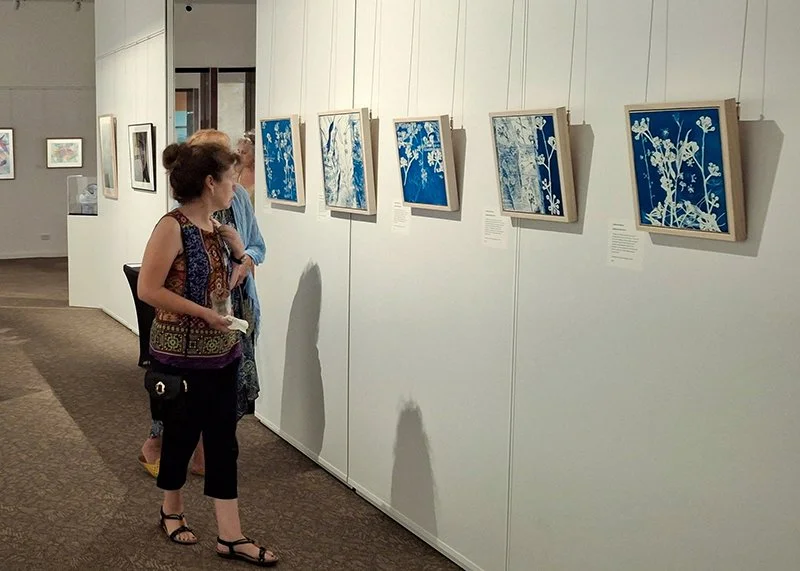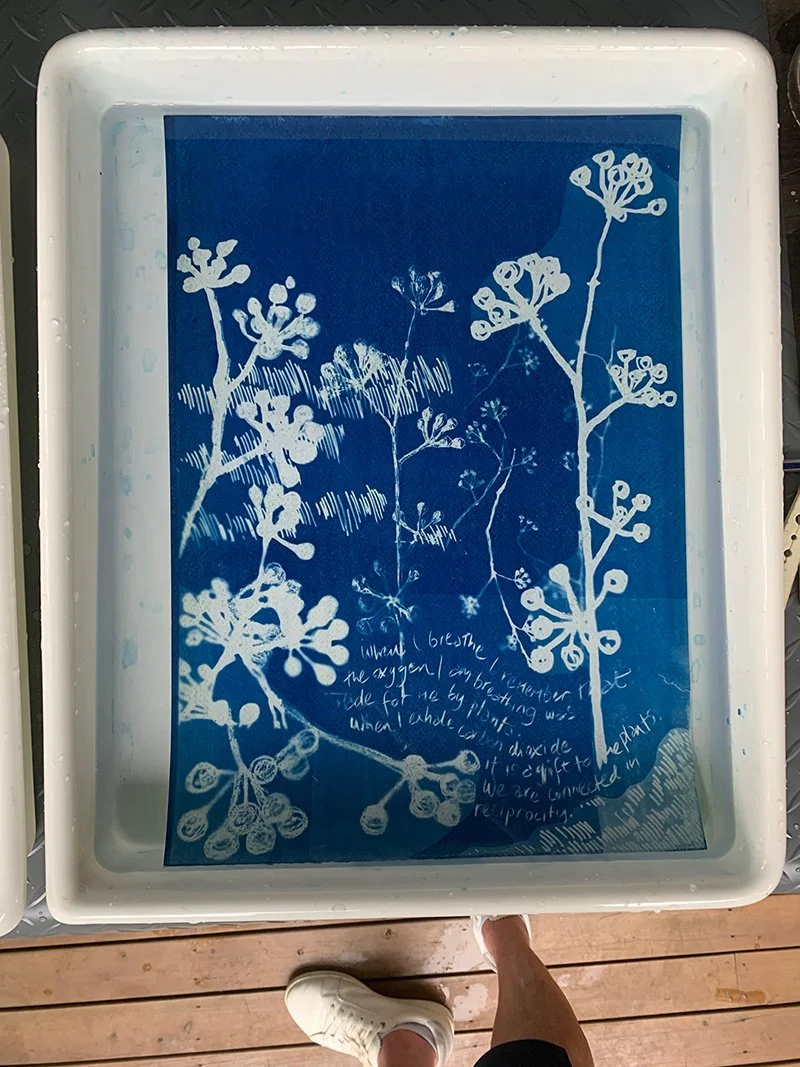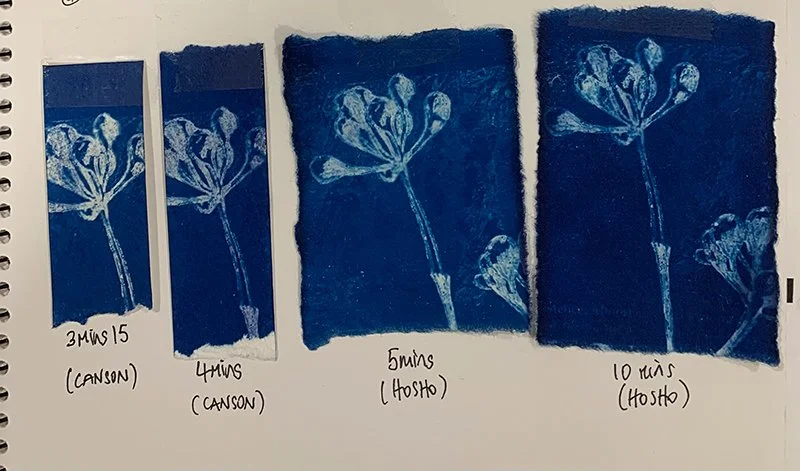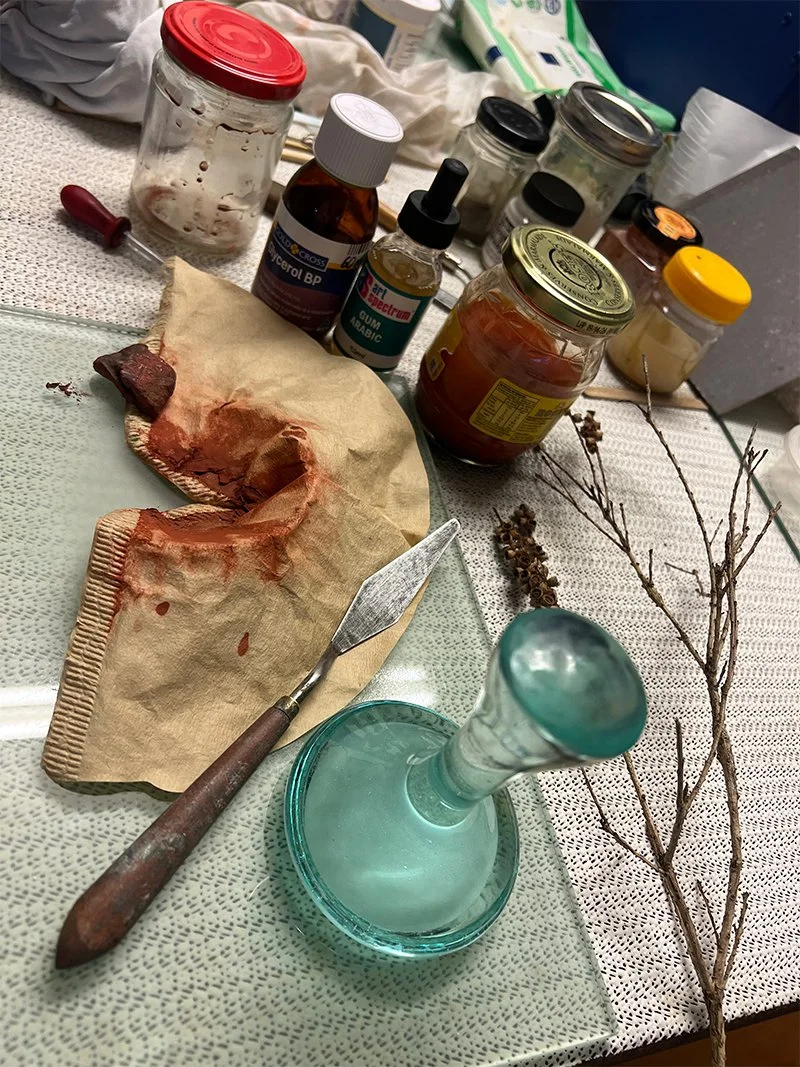Catherine Money
Art Trail 2025, Coochiemudlo Island
Gathering Wind Fall Exhibition, Catherine Money’s work on display
Gathering Wind Fall #1, by Catherine Money
Cyanotype washing process
Cyanotype processing timing
Making earth pigments in Catherine Money’s studio
Deeply inquisitive about the natural world, I focus on notions of art, science, history, liminality and deep listening. In my creative practice I explore the interconnection of life forms and ecologies to highlight the beauty and fragility of the often-undervalued coastal habitat. I strive to raise awareness through my artwork of these vulnerable ecosystems, highlighting the need for their protection through processes of layering.
I am a printmaker and the current processes I am exploring are cyanotype and the making of natural earth pigment.
A cyanotype is a photographic printing technique, made using sunlight or UV light, that results in a cyan-blue print. The process was discovered in 1842, and has been widely used by artists and photographers, but also engineers, to create copies of technical drawings. I apply a light- sensitive chemical solution to watercolour paper, place either film or hand drawn negatives, plant material or any other 3-dimensional objects on top of the coated paper and then expose this to the UV light source for a length of time. Upon exposure to UV light, a chemical reaction takes place. Once the exposure is complete, the placed objects are removed, and the paper is placed in water which stops the chemical reaction. The light-sensitive chemical solution is mixed from two different chemicals – ammonium ferric citrate and potassium ferricyanide. The chemicals are purchased in individual preparations then combined to create the light-sensitive solution which is then applied to the paper with a sponge or brush. Cyanotype prints are archival.
A new creative interest is incorporating natural pigment colour into my artwork. I finely grind earth pigment that I mix with natural binders to then paint on to my prints on paper. The equipment required is simple – a hammer, mortar & pestle, coffee filter papers, jars, a glass sheet and a glass muller. The paints I make are only small in quantity, but they go a long way.
Caring for the environment is central to my art practise – I aspire to create art that has little environmental impact. I try to choose decomposable, natural art materials with little or no plastics. I like that cyanotype is more eco-friendly than many other photographic processes.
When collecting earth pigments, I acknowledge the Quandamooka peoples who have cared for this beautiful island for thousands of years and I try to walk gently, take only the smallest quantities and give back to the land by picking up rubbish and leaving only footprints.
Meet Catherine and see her work at:
Studio #3, 29 James Street (Migaloo Artist Collective)





